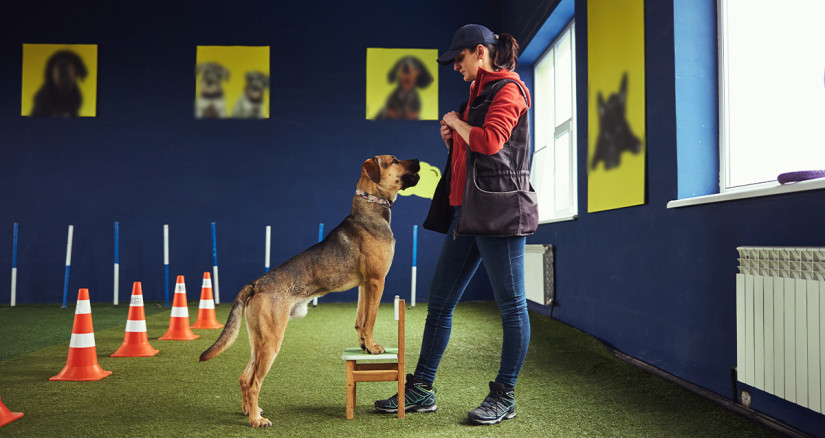
Sit, Stay, Succeed: Project Management Lessons from the Dog Training World
Effective project management is crucial for success in the fast-paced pet food industry and any industry. This article draws unexpected but insightful parallels between dog training techniques and project management strategies. By applying these canine-inspired principles, project managers in any sector can foster a more productive, adaptable, and harmonious work environment. From establishing clear objectives to celebrating milestones, these lessons will help lead the team to fetch remarkable project results.
Who knew that managing projects in the pet food industry could be so similar to training a lovable, energetic puppy? Let's explore how the principles of dog training can be applied to project management and helping companies fetch success.
- Establish Clear Commands (Define Project Objectives): Just like teaching a dog basic commands like "sit" and "stay," projects need to establish clear, concise objectives. These should be easily understood by all team members, just as dogs respond best to simple, consistent commands.
- Positive Reinforcement (Celebrate Milestones): Rewarding good behavior is critical in dog training; the same goes for project management. Celebrate when team members hit milestones or exceed expectations. This could be as simple as a shout-out in a meeting or as elaborate as a team lunch – the equivalent of giving our furry friend a treat for a well-done job.
- Consistency is Key (Maintain Regular Check-ins): Dogs thrive on routine, and so do projects. Establish regular check-ins and status updates to keep everyone aligned and moving forward. Think of these as a daily walk – a time to assess progress, address issues, and reinforce good habits.
- Break Tasks into Manageable Chunks (Step-by-Step Training): We wouldn't expect a puppy to master advanced tricks on day one. Similarly, break projects into smaller, manageable tasks. This allows team members to focus on specific goals without feeling overwhelmed, just like teaching a dog to "shake" before moving on to "roll over."
- Adapt to Individual Learning Styles (Tailor the Approach): Every dog and every team member is unique. Recognize that people have different strengths and working styles. Adapt the management approach to bring out the best in everyone, just as we might use different training techniques for a high-energy terrier versus a laid-back basset hound.
- Use Tools and Aids (Leverage Project Management Software): Dog trainers use leashes, clickers, and treats to aid in training. In project management, leverage software tools to track progress, assign tasks, and facilitate communication. These tools are the project management "leash," keeping everything organized and under control.
- Patience and Persistence (Stay Committed to Long-term Goals): Training a dog takes time and patience. The same goes for managing complex projects. Stay committed to long-term goals, even when progress seems slow. Remember, Rome wasn't built in a day, and the perfect project won't be either.
- Correct Gently, but Firmly (Address Issues Promptly): When a dog misbehaves, effective trainers correct the behavior promptly but gently. In project management, address issues or misalignments as soon as they arise. Be firm in the commitment to the project's success, but gentle in the approach to problem-solving.
- Socialization (Encourage Cross-functional Collaboration): Exposing dogs to various environments and other animals is crucial for their development. Similarly, encourages cross-functional collaboration in projects. Bringing together diverse perspectives can lead to innovative solutions and a more well-rounded final product.
- Continuous Learning (Embrace Agility and Adaptation): The best-trained dogs continue to learn and adapt throughout their lives. Embrace an agile and flexible mindset in the project management approach. Be ready to pivot when necessary and always look for opportunities to improve processes.
- End on a Positive Note (Conduct Thorough Project Reviews): Dog training sessions often end with a favorite game or treat, leaving a positive lasting impression. Similarly, conduct thorough project reviews at the end of each phase or the entire project. Celebrate successes, learn from challenges, and ensure team members feel valued for their contributions.
Applying these dog training-inspired principles to the project management process will create a work environment that is as fun, rewarding, and productive as a well-run dog park. The team will be wagging their tails with enthusiasm, ready to fetch that next big project success!
Remember, whether training a dog or managing a project, the key ingredients are clear communication, positive reinforcement, consistency, and a ton of patience.
Now, go ahead and lead the pack to project management excellence!
If you need assistance in any area of project management, contact your BSM Partners team of experts who can help in business psychology, quality assurance, regulatory, product innovation, veterinary support, product design, marketing insights, and engineering.
Follow us on LinkedIn for the latest updates on all things happening here at BSM Partners.
About the Author
Lee Ann Hagerty is Director of Customer Enrichment and Consumer Insights on the BSM Product Innovation team with 29+ years in the pet food industry, working for Iams/Eukanuba, Procter & Gamble, and Mars Pet Care. She brings a unique combination of project management skills with consumer insights, product design, animal nutrition, and sensory science which drives an in-depth understanding of the pet and consumer. Lee Ann has a passion for helping dogs. Over the last year and a half, she has fostered over 22 dogs. Many of them were senior dogs who had lived their entire lives outside as hunting dogs. She has been a foster pet parent for many years, and it brings her great joy to see these pets find fur-ever homes where they live with families indoors with love and care.
This content is the property of BSM Partners. Reproduction or retransmission or repurposing of any portion of this content is expressly prohibited without the approval of BSM Partners and is governed by the terms and conditions explained here.